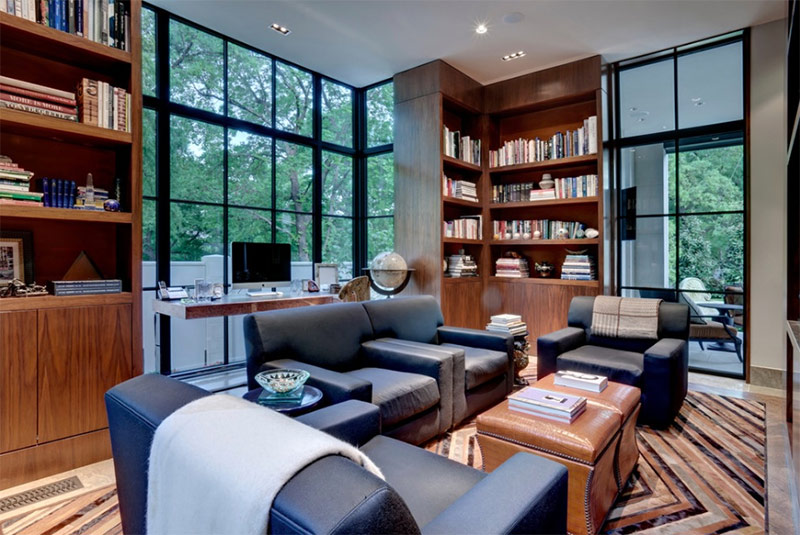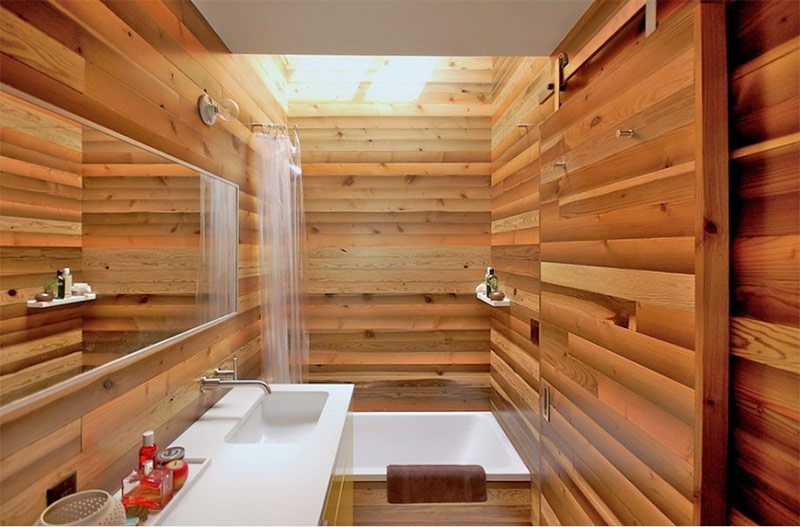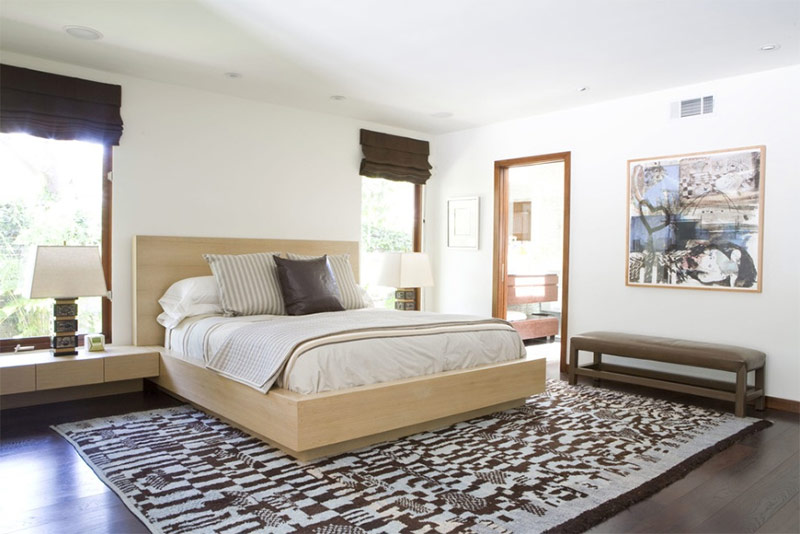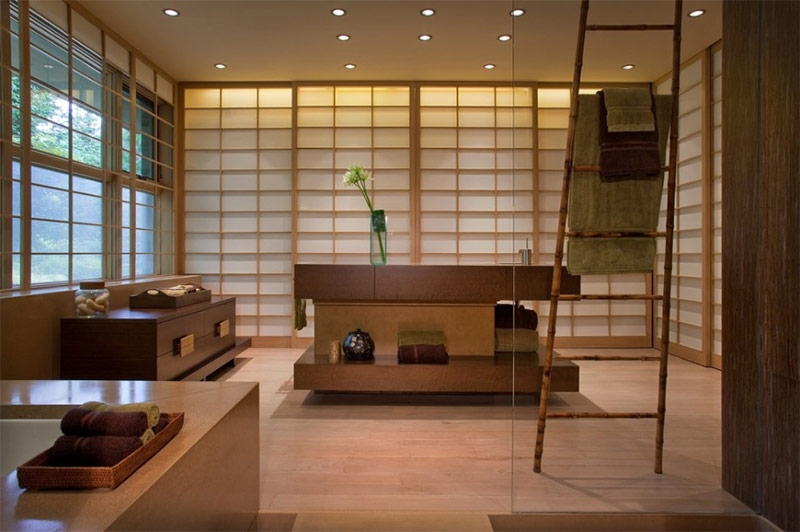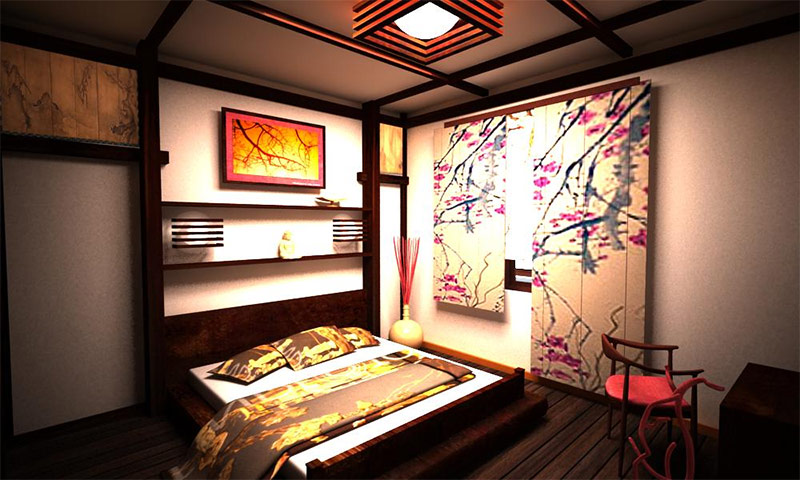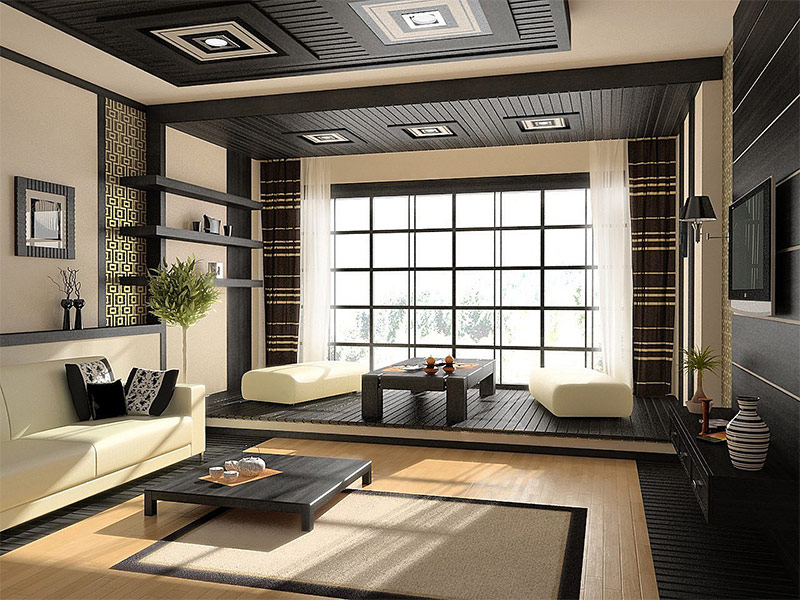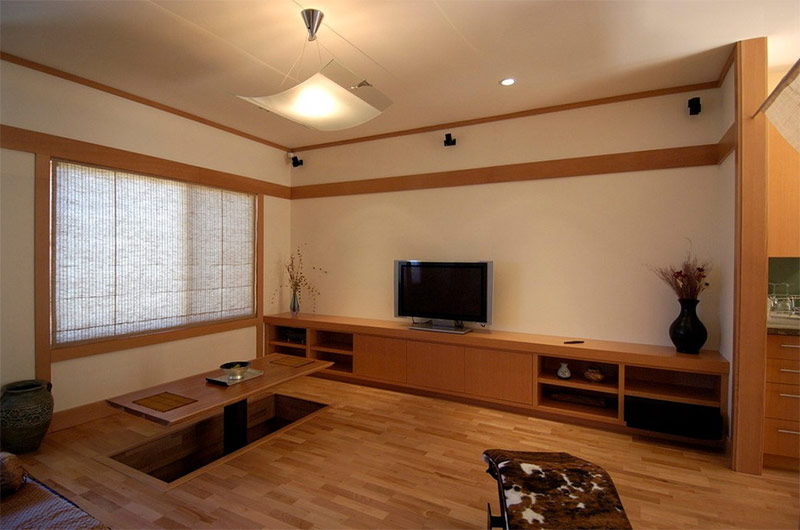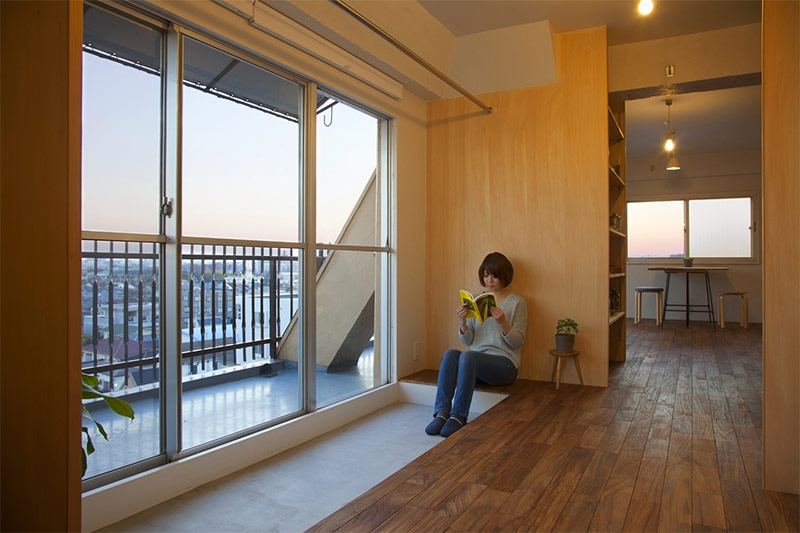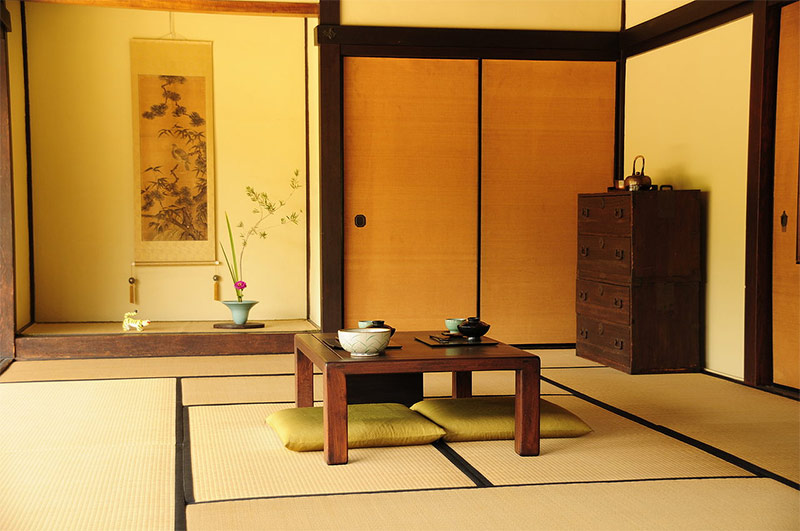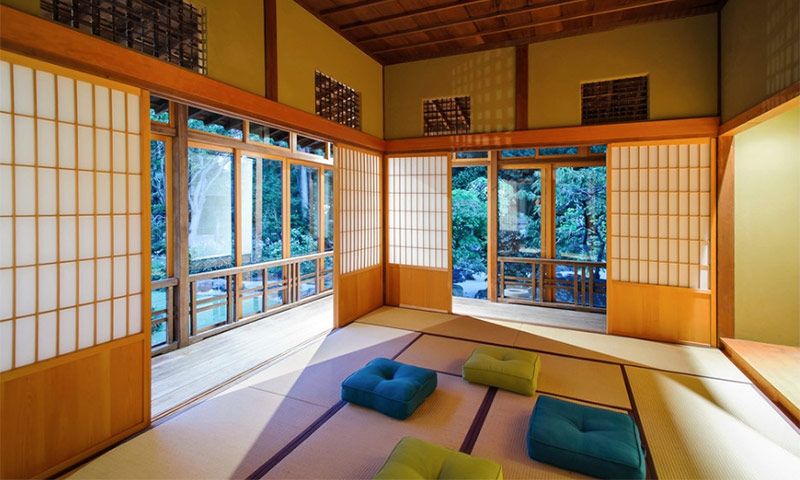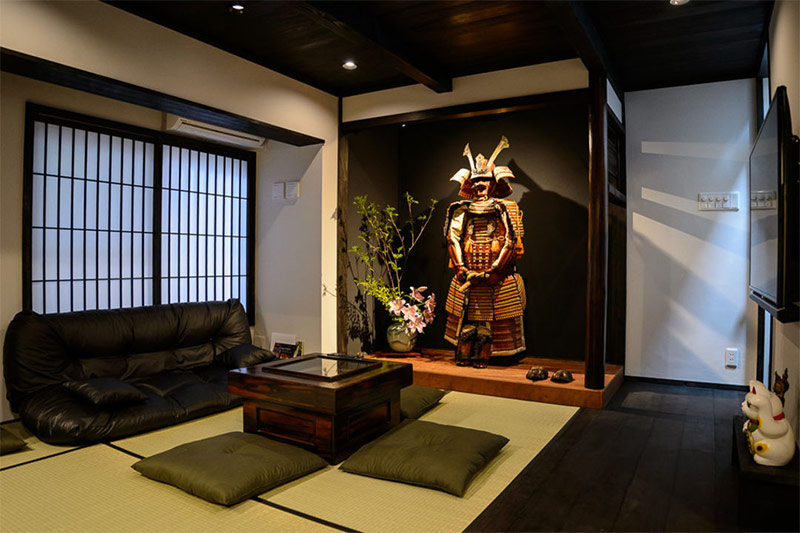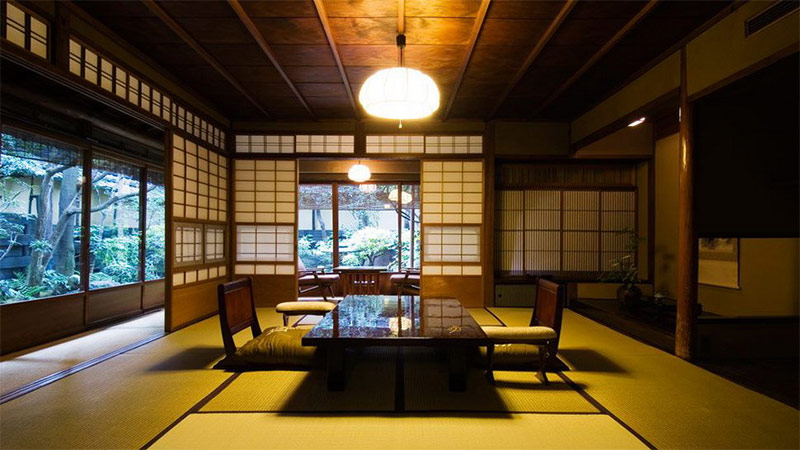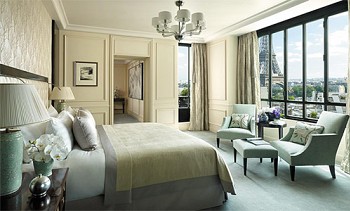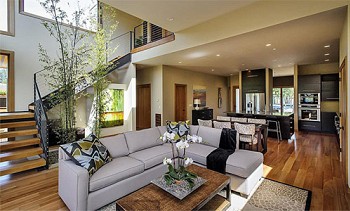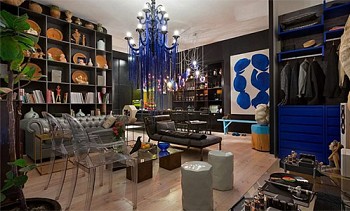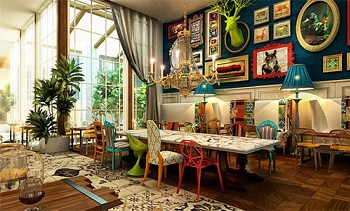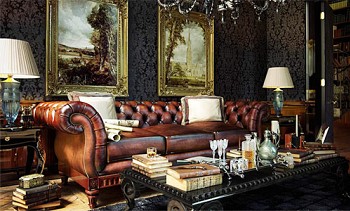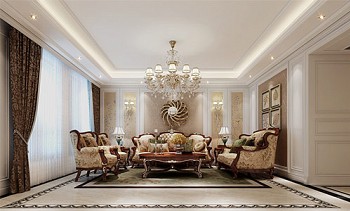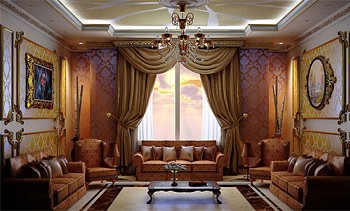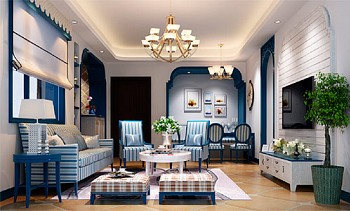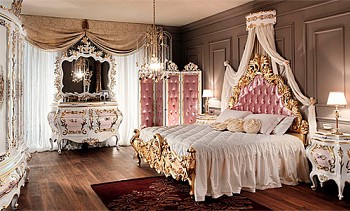Restrained and exotic Japanese style in the interior is in tune with modernity. It is often used to organize the space of small studio apartments, cozy summer cafes, living rooms or bedrooms. It is based on minimalism, the desire for harmony with nature and the knowledge of oneself through the world. The traditional style of the interior of Japanese rooms was formed back in the 16-17th century, but its basic principles are relevant today.
Discovering Japanese interior design, it is important to feel and understand the philosophy of the existence and worldview of the Japanese - the bustle of the world around us is insignificant, only the order in our thoughts and actions is important. Therefore, to achieve harmony with oneself, an abundance of furnishings, bright decor and expensive things of a representative class are not required. It is enough to see the beauty in the small, in everyday objects and surroundings. This style will appeal to pacified people who value order and system. Which at the same time very subtly feel the high aesthetics and beauty of the surrounding space.
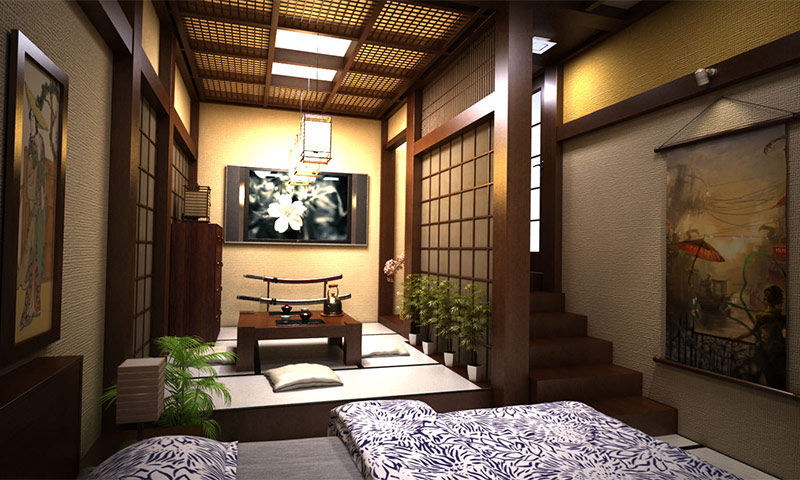
Content:
- History of style formation
- Basic principles of Japanese style
- Colors
- Environmental materials - the foundation of style
- Furniture
- How to use sliding doors and partitions in the interior
- Window decoration
- Floors
- Walls
- The ceilings
- Textile
- Accents used in style
- Lighting
- Photo design ideas for a modern apartment
History of style formation
The Japanese interior design was shaped by several factors:
- climatic conditions;
- persistent fears of a sudden earthquake;
- the dense population of the islands and, as a result, a small living area per person;
- the scarcity of the earth's bowels for natural resources, in particular, iron ore;
- national traditions and philosophy of life.
The main features of the Japanese home were identified in the 16-17th century. It was at this time that a layer of the population began to form with an average income that could luxuriously furnish their homes. The birth of the capitalist structure of the state, with clearly expressed centralized power. The country's leadership was all the more able to equip their homes in the latest fashion. However, this did not happen. Japanese philosophy oriented citizens to other values. The beauty and pristine nature of the world is the true value, in contrast to all the blessings and achievements of mankind. Such views and preferences led to the fact that the premises did not begin to be decorated in a foreign manner, filling them with alien furniture, carpets, statues and other things.

Traditional Japanese home decor.
In addition, historically it happened that the geographical location and features of the area contributed to the invention of unique traditions in the construction of houses and other buildings. The Japanese built houses taking into account a possible earthquake. The walls of the house were made prefabricated, so that after destruction they could be reassembled as a designer. The ancient buildings were also distinguished by a collapsible foundation, which made it possible for the owners to disassemble the house, move it to a new place and assemble it again. There are no internal walls in the original Japanese house. This is due not only to the probability of an earthquake, but also to the desire for free space.

Characteristic Japanese house.
It was the free layout that made it possible to feel the space in a small dwelling. If the townspeople did not have the opportunity to afford a spacious house, and they had to live in a large family in a small dwelling, then they did their best to save the free space. Therefore, the design in the Japanese style involves the use of a minimum amount of furniture, decor and textiles. The most related to this style is modern minimalism.Although the traditional Japanese house does not have clearly defined rooms, the entire area has a pronounced zoning. It is made using multilevel floors and ceilings, bamboo and paper screens and partitions, diffused and accented lighting.
The modern Japanese style is somewhat different from the traditional design of the 17th century. Historical events enriched the experience and capabilities of the Land of the Rising Sun. The events of the First and Second World Wars, technical and scientific progress led to new construction and design opportunities. Along with the natural materials available in Japan, concrete and metal structures, modern materials imitating the surface of stone and wood began to be used. At the same time, the desire to unite with nature, to know oneself through the external environment, to see the beautiful in the small remained unchanged.

The interior of a modern apartment.
Basic principles of Japanese style
Today, creating an ethnic Japanese style in interior design, they are guided by the following principles:
1. The theme of nature is at the core of everything. If you are designing a country house in the Japanese style, it is important to equip not only the house, but also the garden. The house should be its natural extension and take a secondary role. The view from the large window and doorways must certainly open onto a picturesque lawn, pond, fountain or bench in the shade of a curved tree. If the conditions of the city apartment do not allow making it part of the natural landscape, they try to decorate the interior with picturesque views. Use fountains, aquariums, grow small trees or bamboo in the room.
2. Light colors are preferable. The Japanese sought to complement the beauty of natural materials with discreet monophonic warm colors - beige, sand, cream, white. Often black color is found in Japanese interiors. However, the Japanese do not consider it as an independent color, which carries a certain semantic load. It is only a background that allows you to accentuate vibrant details.
3. For the decoration of rooms using natural materials or replacing them with artificial, imitating the structure and pattern of wood, stone, bamboo, straw or canola.
4. Furniture should be aiming down. It lacks high legs, backs, shelves, headboards. It has a smooth monophonic surface and regular geometric shapes.
5. Nothing in the interior should distract yourself from knowing yourself. Therefore, the use of decor is reduced to the necessary minimum. Laconic forms, strict in a businesslike way, furniture is low and straightforward, as ancient wisdom says that life should take place on tatami floor mats.
6. To designate living rooms, partitions of bamboo or racial paper on a wooden frame are used, the walls are removed. In the living space should be as much free space and fewer things.

A modern interior with an open plan, squat furniture and a characteristic niche in the wall.
Colors
To create a distinctive Japanese-style room design, they are based on pure colors.
Original Japanese colors:



Halftones are not welcome, in the interiors do not use bright contrasting color mixing. Japanese philosophy tends to order, so it tries to eliminate chaos in everything. To get a beautiful interior, it is enough to use one pure color in combination with the natural surfaces of wood, bamboo or stone. For example, the beauty and structure of a tree is perfectly emphasized by the white color. Against this background, a network of annual rings and knots is visible. To revitalize a calm color scheme, emphasizing the main areas of the room, pure red color is used. It is the color of strength and masculinity.

A harmonious combination of white and natural wood with an emphasis on red.
Dark colors are also used to create a sense of peace and harmony with the outside world. Most often, this effect is achieved due to the structure of the darkened wood in combination with black furniture.Dark Japanese-style interior is not as common as light, but it is quite acceptable. The main thing is that the condition of geometric order is achieved.

Geometrically organized space in dark colors.
Environmental materials - the foundation of style
In order to reflect the island flavor with its inherent features of minimalism, they choose those materials that were available to the indigenous inhabitants of past centuries. Materials that were freely available in nature. They were not exported from distant countries and were not purchased from neighboring states.
These include:
- wood of cedar, maple, sugi or kiri;
- stone tiles;
- reed and bamboo;
- matting and wicker vine;
- silk.
Even a contemporary Japanese-style design limits the use of linoleum, vinyl and plastic surfaces. It is acceptable to carry out surface finishing using environmentally friendly artificial materials with a decorative surface for natural analogues. For example, a laminate is chosen for the floor instead of wood; instead of natural silk, a more affordable fabric with similar properties is used.

Modern materials in the decoration of the apartment in the Japanese style.
Furniture
Japanese interior design is suitable for a seated person, contemplating his inner world, meditating, resting at home from the bustle of the outside world. Therefore, all furniture is characterized by earthiness. As if ordinary wooden furniture had their legs trimmed and placed on the floor. The number of furnishings is limited, the fewer the better. There should not be anything superfluous in the room.
Traditionally, the house has:
- mats made of straw or matting;
- low table for tea and food surrounded by small pillows for sitting;
- instead of a traditional bed, tatami is used or the mattress is placed directly on the floor;
- the kitchen is equipped with a hearth and cabinets with closed shelves, behind which all the kitchen utensils are hidden;
- for the bathroom, washbasins are often selected in the shape of a bowl and a traditional ofuro wooden bathtub (or similar in shape).

The room is decorated with simple wooden furniture with straight lines.

Japanese-style modern bathroom.
Usually, wood was used to make furniture. The higher the position of the owner, the more valuable and expensive the species of wood was used. Travel chests, cabinets, chests of drawers could be made of inexpensive conifers, or, conversely, from a strong and durable teak. Expensive furniture was decorated with forged elements, varnished. At the same time, the cost of furniture was not deliberate and was not evident. It had a simple form, it lacked a magnificent decor. Modern furniture has adopted all these principles, it is distinguished by interesting forms, squat design and naturalness.
Therefore, when choosing furniture to create a Japanese style in the interior, you can use two options:
1. buy authentic items with a historical past in an antique store or in a flea market;
2. or choose suitable modern analogues from the Japanese collection.

A table and chairs for tea in the living area.
How to use sliding doors and partitions in the interior
Shoji partitions not only form the appearance of the Japanese home, but also carry a practical functional load. With their help, you can easily change the layout of an open living space. Usually they were made from bamboo and rice paper. They were often used instead of walls that are not able to withstand an earthquake. Shoji, due to their light weight, can withstand the cataclysm, and in case of deformation, they can easily be replaced with new ones. Modern manufacturers offer several options for a worthy replacement of partitions - compartment doors with a characteristic pattern, panels with painted binding for decorating walls or ceilings.
Doors and partitions, as well as portable screens are able to transform the appearance of the room, and create a cozy corner in any place.
Window decoration
Noteworthy is not only the interior decoration of window openings, but their external design. Usually, the Japanese house was equipped with long Engawa canopies, which allowed diffused natural light to enter the house, and directed rain streams away from the house. Despite the fact that there are many windows in the Japanese interior, little light enters the house, twilight reigns in the room. This is one of the characteristic features of the style. They are not afraid of the darkness and twilight, they let him into the house.
To decorate windows from the inside, use direct cloths from fabric or paper. Their distinguishing feature is that they can move not vertically, but horizontally. For Japanese screen curtains, frills, draperies or ruffles are uncharacteristic. In modern interiors, screen curtains are replaced by similar roller blinds or Roman ones.
Floors
For the design of floors using solid wood, stone tiles, sea pebbles. Tatami can be laid on the floor. The main thing is not to arrange them crosswise. This is considered a bad omen. The floors are also complemented by carpets made of natural materials - vines, reeds, coarse thread.
To create a Japanese style in the interior of a modern apartment use:
- light parquet or laminated board;
- bulk floor;
- ceramic matte tiles.

Cozy floor with natural flooring.
Walls
For the decoration of walls using natural materials or their various combinations. For example, a room may have wood paneling around the perimeter. Or wooden lamellas are effectively combined with smooth plastered and pastel colored walls. Also, walls with masonry can be interspersed with areas covered with paper wallpaper. Smooth walls are decorated with paintings or engravings depicting nature.
The ceilings
The color and shape of the ceilings corresponds to the general style:
- it should have a clear shape, for example, a rectangle or a triangle;
- the color of the ceiling can repeat the color of the walls;
- For decoration use wallpaper, matte paint, stretch fabric or hanging panels.
To highlight one or another zone in an open plan, ceilings are made in several levels, decorating each zone in different ways.

White painted ceiling with wooden beams and battens.
Textile
Textile interior design makes unobtrusive and comfortable. Natural fabrics of discreet shades are selected. For example, silk, linen, cotton or blended fabrics. Traditional drawings that complement Japanese textiles depict views of Mount Fuji, scenes from the life of samurai, hieroglyphs, wildlife.
Textiles are used for decoration:
- windows;
- sleeping area;
- places for sitting;
- screen.

Textiles in an ordinary Japanese apartment.
Accents used in style
When creating Japanese interior design, they strive primarily to achieve harmony and poise. Therefore, even in the presence of accents, the space of the room should look harmonious and balanced. As decorative elements decorating the house, choose characteristic objects of bright contrasting color or with an eye-catching pattern.
It can be:
- paintings and prints;
- porcelain dishes and decorative vases;
- tea ceremony kit;
- a firm of rice paper or silk;
- bonsai trees;
- Japanese lanterns;
- Buddha figurines.
Lighting
Light plays an important role in creating the color of the eastern interior. An important feature of lighting is the use of diffused rather than directional light sources. For this purpose, lampshades made from rice paper and bamboo - an acari lamp. Including lamps and sconces in different corners of the room, the Japanese change the perception of the interior, illuminate specific objects or a zone. This technique is crucial for dividing an open-plan space.

The combination of floor and ceiling lamp made of washi rice paper.
Japanese interior design has clear national features, making it one of the most sought after ethnic styles among contemporary designers. It is characterized by the use of natural materials, national interior and household items, the desire for harmony with oneself and unity with nature.To design a Japanese-style urban apartment, it is not necessary to follow all national lines, just pick up an interesting idea and realize it.

